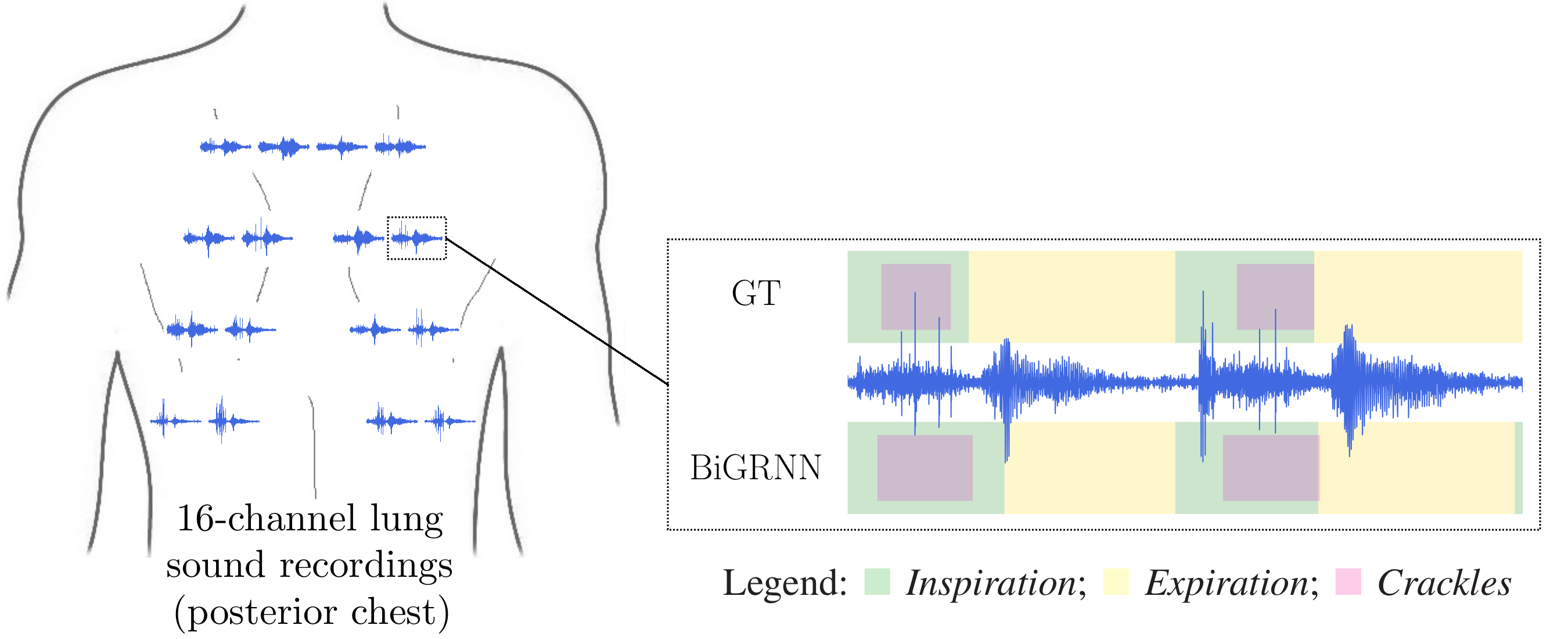Computer-aided Lung Sound Analysis for the Diagnosis of Idiopathic Pulmonary Fibrosis - A First Study
- Published
- Sat, Dec 01, 2018
- Tags
- rotm
- Contact

Early diagnosis of idiopathic pulmonary fibrosis (IPF) is of increasing importance, due to recent success to slow down the disease progression. Auscultation is a helpful mean for early diagnosis of IPF. Auscultatory findings for IPF are fine (or velcro) crackles during inspiration, which are heard over affected areas.
We present a computer-aided approach for the diagnosis of IPF. In particular, we present a method for event detection in single-channel lung sound recordings. This includes the detection of crackles and breathing phase events (inspiration/ expiration). Therefore, we propose an event detection approach with spectral features and bidirectional gated recurrent neural networks (BiGRNNs). In our experiments, we use multi-channel lung sound recordings from lung-healthy subjects and patients diagnosed with idiopathic pulmonary fibrosis, collected within a clinical trial. We achieve an event-based F-score of F1 ≈86% for breathing phase events and F1 ≈72% for crackles. The proposed method shows robustness regarding the contamination of the lung sound recordings with noise, bowel and heart sounds.
The figure schematically illustrates recorded lung sounds over the posterior chest. The enlarged recording contains the labeling of the temporal position of the three events crackle, inspiration, and expiration. The upper event roll represents the ground truth (GT) labeling and the lower one the automatically detected events (BiGRNN).
More information can be found in our paper.
Browse the Results of the Month archive.
